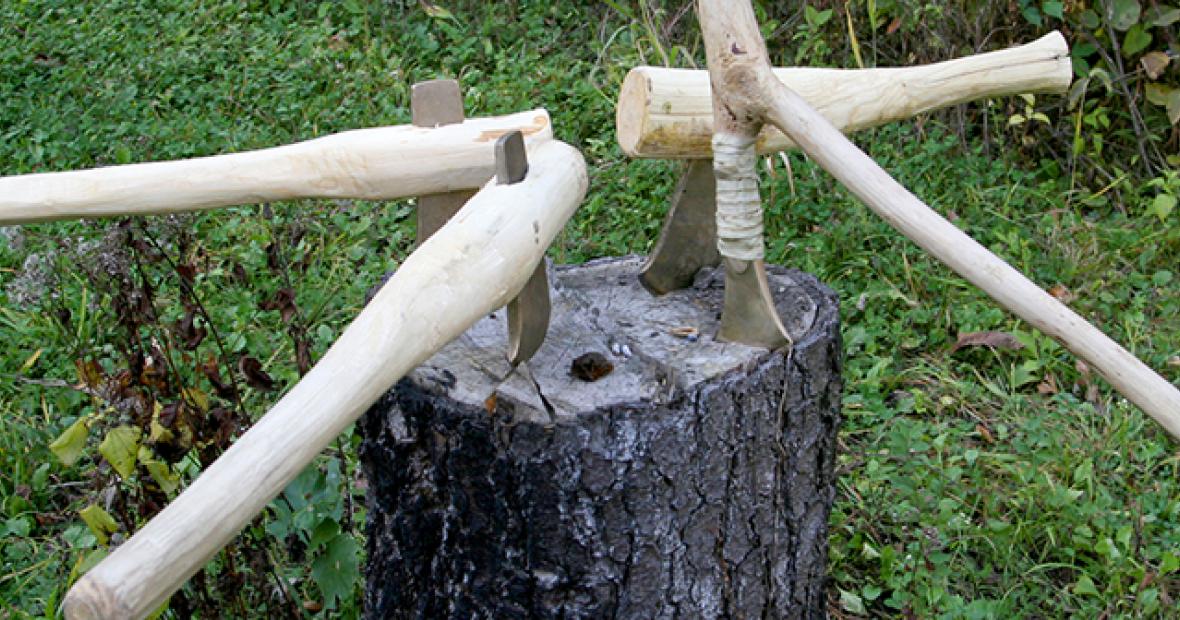Old World Prehistory
In my Old World Prehistory class I use bronze axes to teach about the impact of early technologies. Even prehistoric tools come from complex systems. Before you have a bronze axe, you have mines and all the tools to work them, the high temperature fire technology of smelting and casting, ceramics and stone carving for moulds, and so on.
For the class project, we start with the cast axe blade. I carved a wooden form copying axes from the early Bronze Age in Britain (ca 1800 BC), which was reproduced in modern bronze by MaxCast Foundry in Kalona. Each student received a bronze axe head and had a couple of days of after class work to make hafts for them. Modern tools were used, but everyone cames to see that many tools are needed to make the axe, and those tools also have a background of previous tools and technologies, ad infinitum. The complex technologies of making bronze imply the involvement of skilled specialists, and the possibility of control and exploitation by the elite of the time. Armed with axes, the class looked for something to cut. John McIntyre kindly allowed the class to fell a few trees on his property. At this point we quickly learned that a technology is not just material, but also involves learned skills - few of the class had ever used an axe before. For class purposes, the point was to use the axes enough to have a subjective feel for them, compare and think about the different hafts, and compare the bronze tools to modern hatchets, and to a couple of stone axes. To produce a bit of quantified data to analyze, each student chopped through a measured section of log with both their bronze axe and a modern hatchet, recording time spent, number of strokes, and amount of wood removed. For further experience, the class constructed something appropriate to the Bronze Age, but reasonably simple. This year the class built a “monument,” an arch constructed with mortise and tenon, and several posts with axe-carved decoration. If you look closely at the monument, you can see some symbolic oppositions that were probably also in the minds of Bronze Age monument builders: Earth/Sky, Male/Female, Nature/Culture. Monument building is a social event. In the Bronze Age, there was presumably religious ritual involved; they reflected on this by burying “valuables” (pennies) under the posts. A monument reflects the power and responsibilities of leadership. I provided stew for a “feast” as we sat on the lawn for the academic discussion of their project. The monument stood for a few weeks as a display; the students could “enhance their status” by pointing to a monument they helped build. The class also commemorated the event with a group photo, and the class somewhat satirically insisted on reflecting in a second photo on my powerful position as professor and Bronze Age chieftain.

